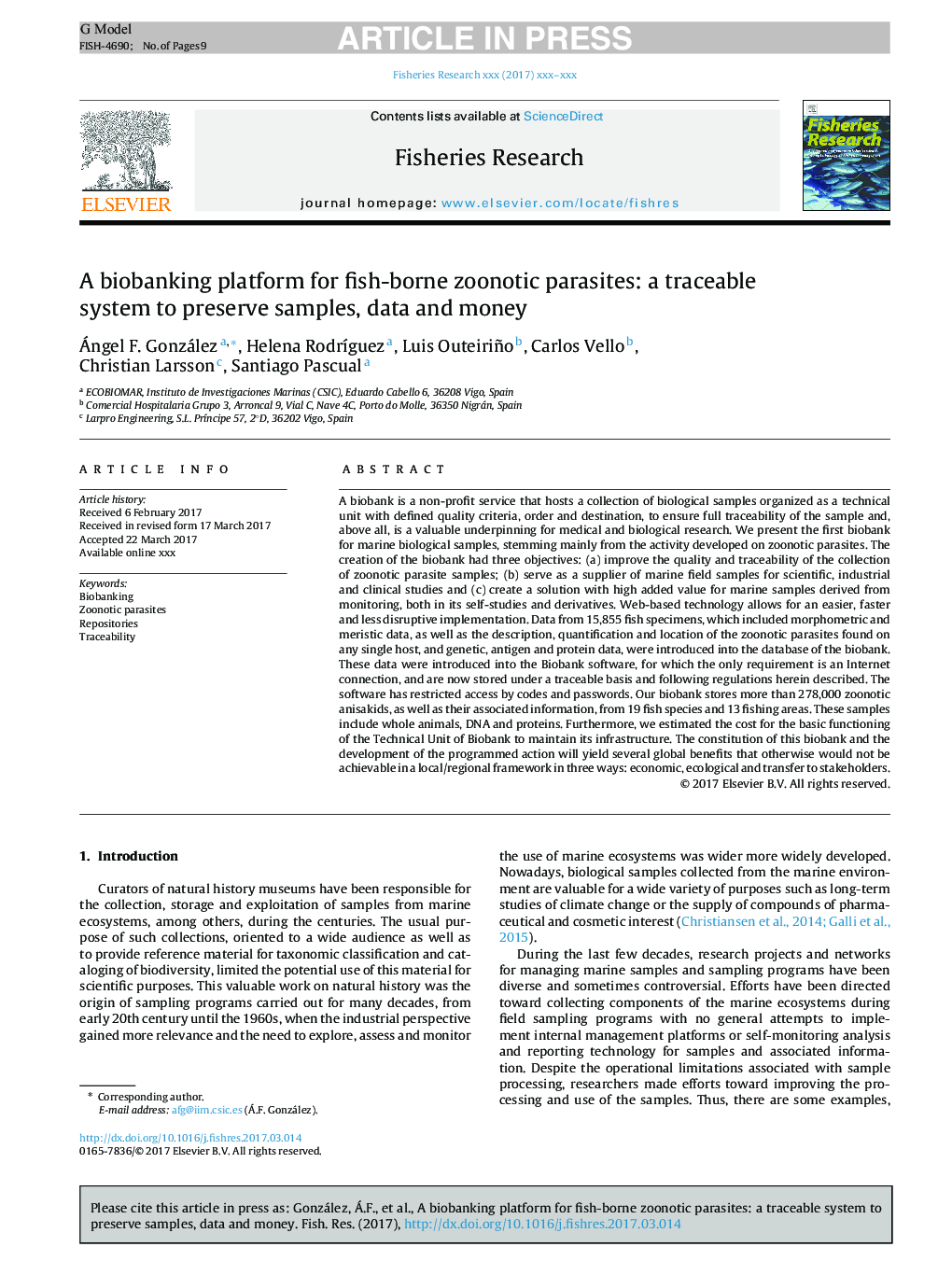| Article ID | Journal | Published Year | Pages | File Type |
|---|---|---|---|---|
| 8885461 | Fisheries Research | 2018 | 9 Pages |
Abstract
A biobank is a non-profit service that hosts a collection of biological samples organized as a technical unit with defined quality criteria, order and destination, to ensure full traceability of the sample and, above all, is a valuable underpinning for medical and biological research. We present the first biobank for marine biological samples, stemming mainly from the activity developed on zoonotic parasites. The creation of the biobank had three objectives: (a) improve the quality and traceability of the collection of zoonotic parasite samples; (b) serve as a supplier of marine field samples for scientific, industrial and clinical studies and (c) create a solution with high added value for marine samples derived from monitoring, both in its self-studies and derivatives. Web-based technology allows for an easier, faster and less disruptive implementation. Data from 15,855 fish specimens, which included morphometric and meristic data, as well as the description, quantification and location of the zoonotic parasites found on any single host, and genetic, antigen and protein data, were introduced into the database of the biobank. These data were introduced into the Biobank software, for which the only requirement is an Internet connection, and are now stored under a traceable basis and following regulations herein described. The software has restricted access by codes and passwords. Our biobank stores more than 278,000 zoonotic anisakids, as well as their associated information, from 19 fish species and 13 fishing areas. These samples include whole animals, DNA and proteins. Furthermore, we estimated the cost for the basic functioning of the Technical Unit of Biobank to maintain its infrastructure. The constitution of this biobank and the development of the programmed action will yield several global benefits that otherwise would not be achievable in a local/regional framework in three ways: economic, ecological and transfer to stakeholders.
Related Topics
Life Sciences
Agricultural and Biological Sciences
Aquatic Science
Authors
Ángel F. González, Helena RodrÃguez, Luis Outeiriño, Carlos Vello, Christian Larsson, Santiago Pascual,
